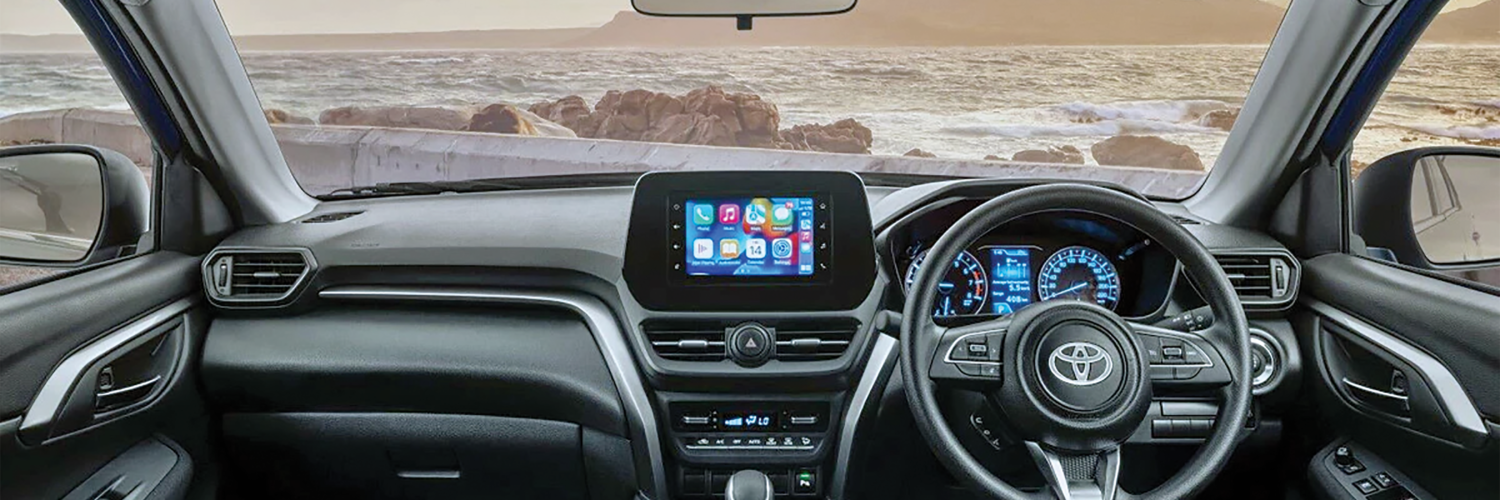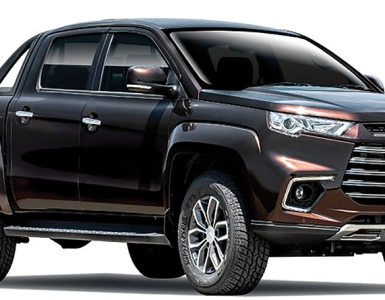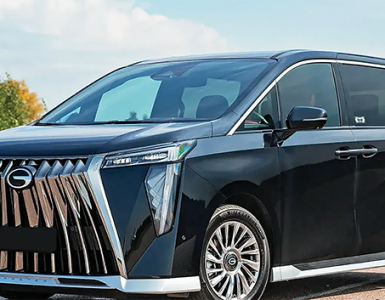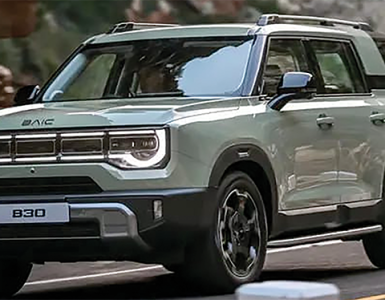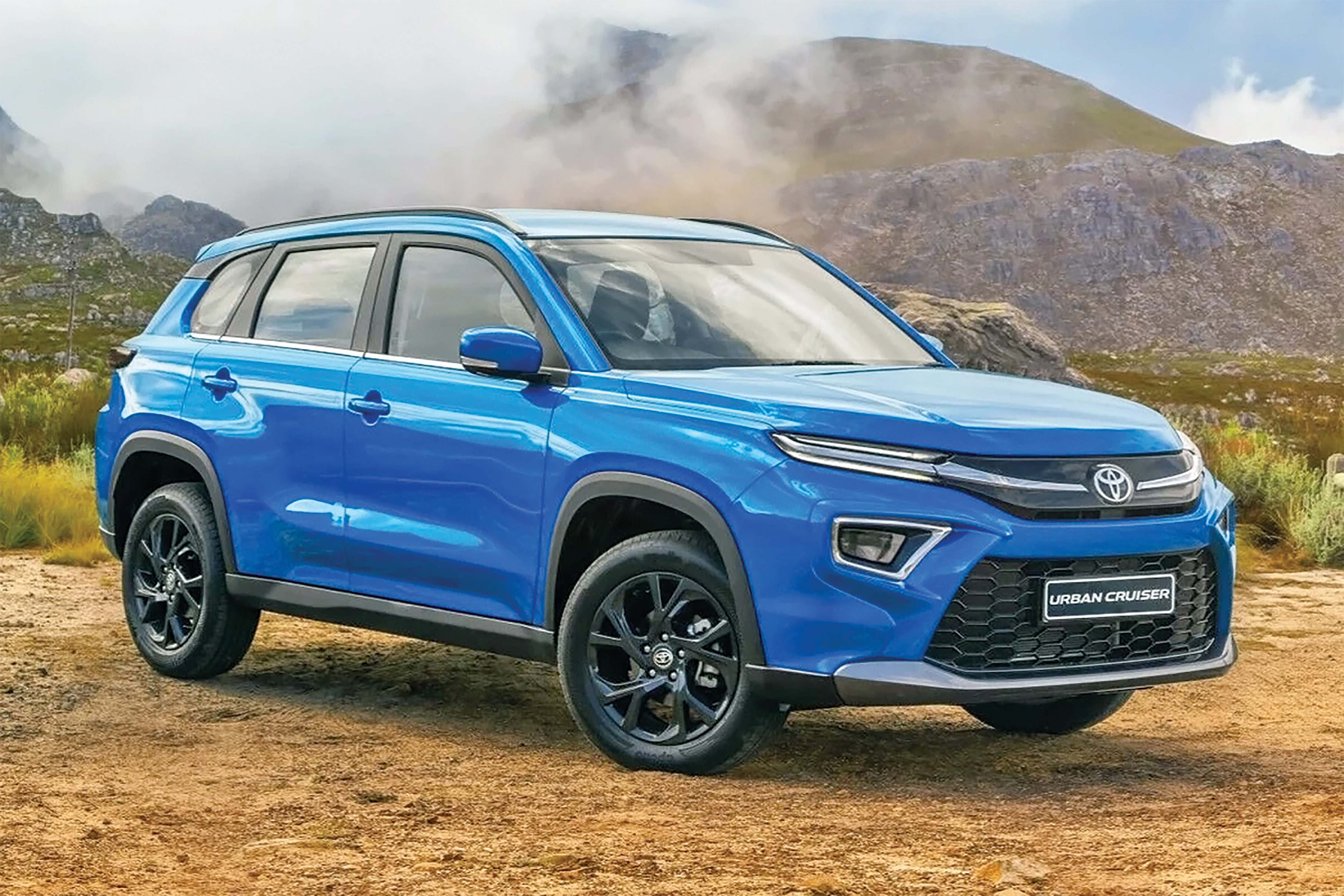
2023 URBAN CRUISER: The compact family-car is considerably longer than its predecessor all for a pocket-friendly price under R350k
By Ali Mphaki
Sibling rivalry is on the cards with the newly-launched Toyota Urban Cruiser likely to eat up on the followers of its elder sibling the award-winning Toyota Corolla Cross.
Forget that the Urban Cruiser is developed by Suzuki alongside the closely related new Grand Vitara (which itself has just touched down in SA), but is produced by Toyota Kirloskar Motor at its Bidadi plant in India.
The new Urban Cruiser is shrewdly positioned just below the Corolla Cross, which starts at R392 900 and runs through to R512 500. And were you were to ask someone whether they would prefer the new 2023
Toyota Urban Cruiser or the award-winning Toyota Corolla Cross chances are they would choose the latter. Do you buy to an entry-level model or go for top-of-the-range? Its a quanundrum which faces most motorists, but obviously determined by how deep is one’s pockets. Word in the streets is that you can only settle for a Cruiser if you cannot afford a Cross. No offence to the newly-launched Urban Cruiser though its arrival is somewhat a self-created unintended cul-de-sac for the
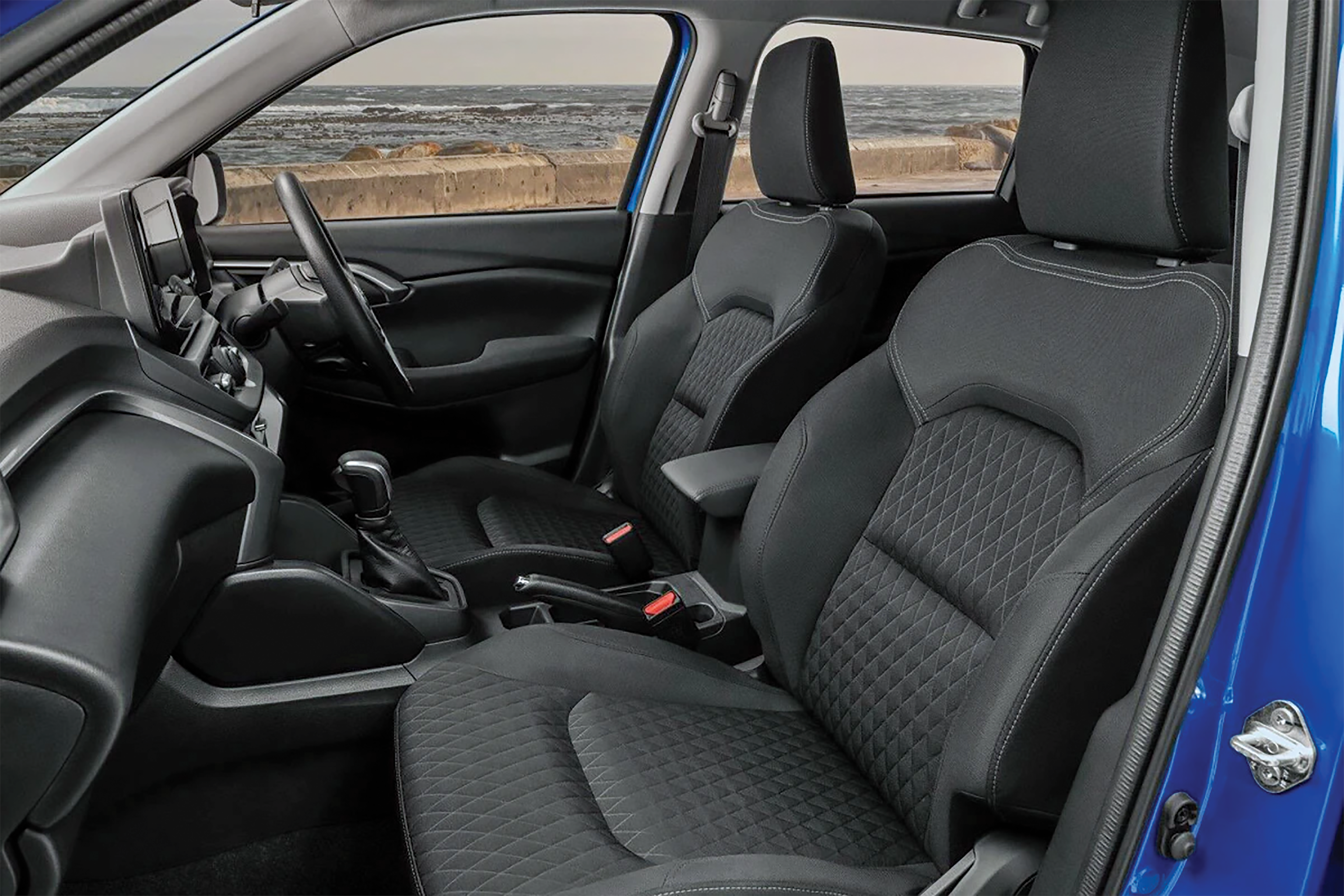
Toyota’s new Urban Cruiser, which finds itself just below the Corolla Cross in terms of pricing. What seems going for the Urban Cruiser is that it does the basics right, plus offers plenty of features and space for a small family, all for a pocket-friendly price under R350k. The newcomer is a considerable 370 mm longer (at 4 365 mm) than its predecessor, while its wheelbase is a handy 100 mm lengthier at 2 600 mm.
Luggage capacity comes in at a claimed 353 litres (25 litres more than before), while ground clearance is 210 mm. That puts it fairly close in size to the locally produced Corolla Cross, which is 4 460 mm long and has a wheelbase of 2 640 mm.
The local range comprises 3 front-wheel-drive derivatives, each powered by Suzuki’s familiar K15B naturally aspirated 1.5-litre petrol mill, which here generates 77 kW and 138 Nm (just as it did in the old model). Transmission choices again include a 5-speed manual gearbox and a 4-speed torque-converter automatic cog-swapper (the claimed combined fuel economy figure is 6.1 litres per 100 km, regardless of the specified transmission).
Pricing for the Toyota Urban Cruiser when it first launched in South Africa in 2021 started from R247 900 with the 1.5 XR derivative retailing for R294 500. Fast forward to 2023 the Urban Cruiser 1.5 XS kicks off the range at R329 400, while upgrading to the 1.5 XR pushes the price to R347 400.
The self-shifting range-topper – badged as the 1.5 XR AT – comes in at R369 900. If you ask me, that’s almost R80 000 more for the entry-level model and R100 000 more for the top-of-the-range 1.5 XR AT.
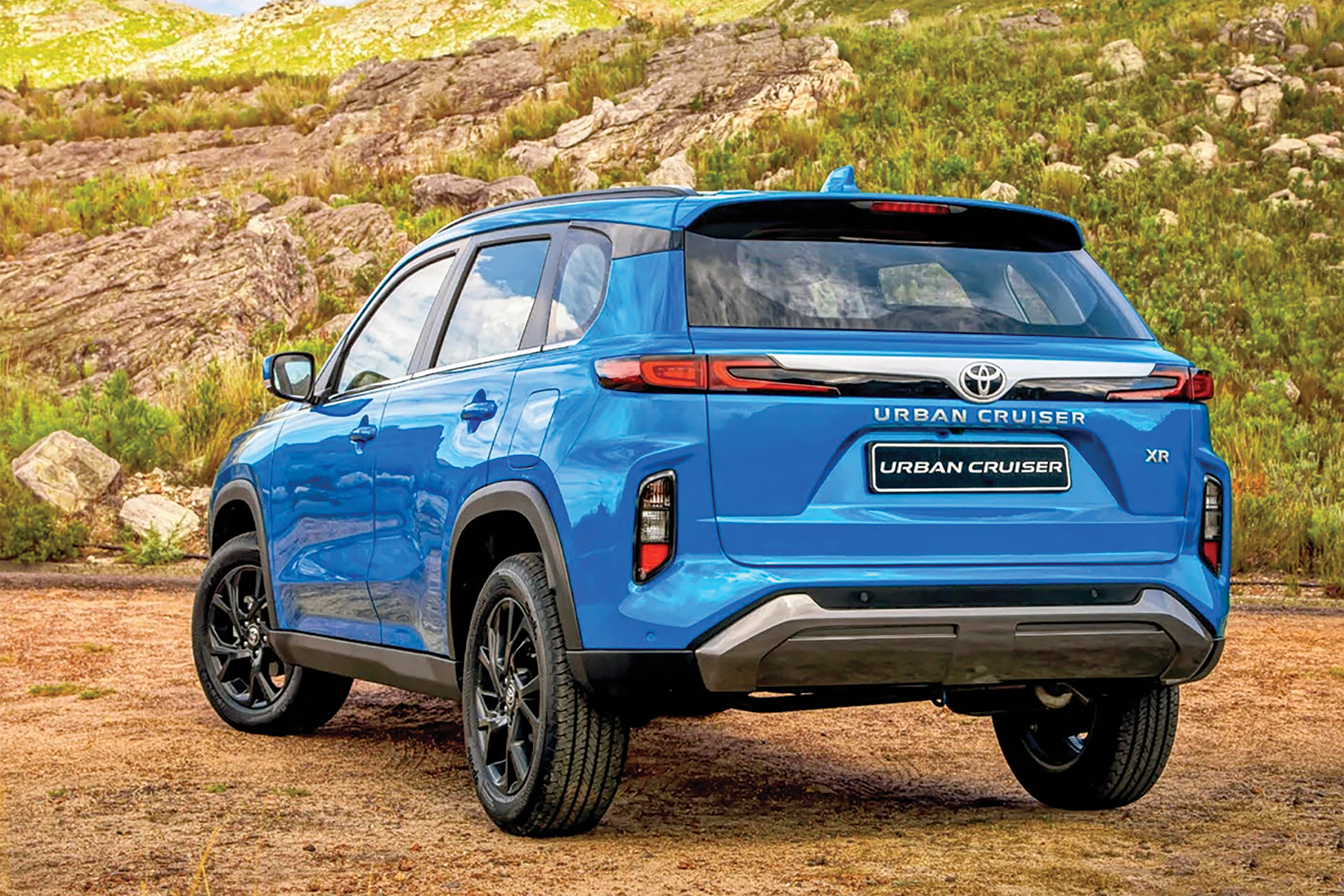
motoring:
Briefs
CAR THIEVES ON A RAMPAGE
THIEVES steal more than 300 cars a day, but just 14 thefts lead to court, The Sun on Sunday can reveal. There were 110,121 reports of stolen vehicles in England and Wales last year — 302 a day. Data shows how the number of car thieves being charged is decreasing
But police took action against the alleged offender in just 5,159 cases — 14 a day, Home Office statistics show. In 2015-16 there were almost 30,000 fewer thefts — 82,076 — yet more people — 8,461 — were charged.
PRADO DELAYED, PRADO DENIED
Previously due for a mid-2023 reveal, it seems Toyota has pushed the next-gen Prado’s introduction back to April 2024. Many details remain unchanged, including its transition to a version of the 300 Series’ TNGA-F frame platform, but a report from Japanese industry publication Magazine X now suggests a new petrol engine will feature at launch. The report also suggests the car will change its official name from LandCruiser Prado to LandCruiser 250 Series in the Japanese market.
The Prado’s familiar 2.8-litre turbo-diesel four-cylinder sounds like it will remain on the menu, though as suggested in previous reports two electric motors could enter the mix to both improve fuel economy and bolster its 150kW/500Nm outputs.
MITSUBISHI OUTLANDISH
BOTHAVILLE – The highly anticipated Mitsubishi Outlander will finally make its local debut at this year’s Nampo Harvest Day, the largest agricultural show in the Southern hemisphere, held annually in Bothaville.
At Nampo Harvest Day Mitsubishi will showcase four new models to the public for the first time and headlining this product rollout is the all-new Mitsubishi Outlander. “We are very excited that we are able to finally share Mitsubishi’s new flagship model with the public and feel that Nampo Harvest Day is the perfect location to do so,” says Jeffrey Allison, General Manager: Marketing at Mitsubishi Motors South Africa (MMSA).
Staying true to what the Mitsubishi brand stands for, the Outlander features a modern design, the best in all-wheel drive technologies and convenient seating arrangement for seven occupants making it a fitting flagship to the Mitsubishi range.
MORE AND MORE FOR OMODA
OMODA South Africa has expanded the OMODA C5 range from three to five models including the introduction of Luxury and Luxury S grades. Prior to the introduction of these new models, the OMODA C5 range consists of the Tech, Elegance and Elegance S models. The new Luxury and Luxury S grades will slot in between the Tech and Elegance ranges.
In terms of specifications and styling the new Luxury grade is similar to its Elegance siblings than to the Tech model. Both Luxury models have 18” precision cut alloy wheels with 215/55 tyres and red brake callipers. These models also have the same stylish roof-mounted spoiler, LED running and brake lights and sunroof as the top of the range model.
CARS THAT WON’T GROW OLD
The new car market in the United States is still relatively unstable, which means fewer new vehicles hit the US roads every day. As a natural result of this trend, there are more and more older vehicles in operation and according to the latest analysis from S&P Global Mobility, the average age of cars in the country has reached a new record.
According to the available data, more than 284 million vehicles are currently in operation on US roads. Their average age is 12.5 years, which represents an increase in the average age by more than three months compared to 2022. This year also represents the sixth consecutive year of increase in the average vehicle age of the US fleet, according to S&P Global Mobility.
Published on the 99th Edition

